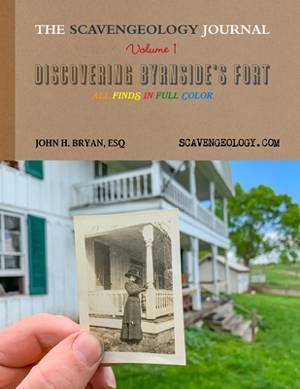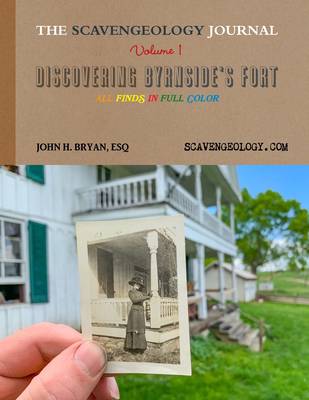
- Afhalen na 1 uur in een winkel met voorraad
- Gratis thuislevering in België vanaf € 30
- Ruim aanbod met 7 miljoen producten
- Afhalen na 1 uur in een winkel met voorraad
- Gratis thuislevering in België vanaf € 30
- Ruim aanbod met 7 miljoen producten
Zoeken
€ 52,45
+ 104 punten
Omschrijving
SCAV-ENG-E-OL-O-GY: The study of history through the excavation of discarded items, exploring people's attics, flying drones, and stuff. This is Volume 1 of the ongoing SCAVENGEOLOGY JOURNAL, chronicling the discovery of an 18th century log fort from the Revolutionary War era, located in modern day West Virginia - but in what was then the isolated Virginia frontier. "Willowbrook Plantation," one mile outside of the beautiful small town of Union, West Virginia, was an antebellum plantation home, lived-in by three prominent families, spanning the 18th century through the 20th century. Join in the fun as we explore the items left inside the house, the items found underneath the ground in the yard, and of course, uncover the original 18th century log fort, covered in plaster installed in 1858. It's all about the history.
Specificaties
Betrokkenen
- Auteur(s):
- Uitgeverij:
Inhoud
- Aantal bladzijden:
- 80
- Taal:
- Engels
Eigenschappen
- Productcode (EAN):
- 9780359842018
- Verschijningsdatum:
- 9/08/2019
- Uitvoering:
- Paperback
- Formaat:
- Trade paperback (VS)
- Afmetingen:
- 216 mm x 279 mm
- Gewicht:
- 276 g

Alleen bij Standaard Boekhandel
+ 104 punten op je klantenkaart van Standaard Boekhandel
Beoordelingen
We publiceren alleen reviews die voldoen aan de voorwaarden voor reviews. Bekijk onze voorwaarden voor reviews.











